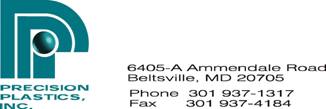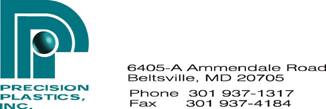-----Original Message-----
From: Greg Cottrell <greg@precisionplastics.com>
To: personal_submersibles <personal_submersibles@psubs.org>
Sent: Wed, Jun 15, 2011 9:03 am
Subject: RE: [PSUBS-MAILIST] Hemisphere Seat Formula


From: Greg Cottrell <greg@precisionplastics.com>
To: personal_submersibles <personal_submersibles@psubs.org>
Sent: Wed, Jun 15, 2011 9:03 am
Subject: RE: [PSUBS-MAILIST] Hemisphere Seat Formula
The new sub is at about 50% and I’m
shooting for dives in the early fall. If it works like it should I’ll be
headed down to sunny Florida!
Greg Cottrell
Project Manager

P please consider the environment before printing this email
From: owner-personal_submersibles@psubs.org [mailto:owner-personal_submersibles@psubs.org] On Behalf Of vbra676539@aol.com
Sent: Wednesday, June 15, 2011 12:43 PM
To: personal_submersibles@psubs.org
Subject: Re: [PSUBS-MAILIST] Hemisphere Seat Formula
Sent: Wednesday, June 15, 2011 12:43 PM
To: personal_submersibles@psubs.org
Subject: Re: [PSUBS-MAILIST] Hemisphere Seat Formula
Truthfully, I don't think the dome ports
will EVER develop cracks in their scheduled lifetime. The original design
(o-ring in the center of the mating surface) is still running fine. The later
ones, with the o'ring groove built into the retaining ring (with the mating
surface serving as the third side and the whole thing captured by the acrylic)
just don't have any hard points to worry about. Like you say, if it fails,
it'll fail on the inboard side. O-rings are just to keep the water out on the
surface. They mating surfaces do the sealing at depth and the o-ring takes a
break.
I like the idea of a rodeo. Talked to Dan
Lance and once to Dan H. about it. We'll be doing the major work on Gamma this
summer, then start assembling after paint. Where are you on the new sub, and
where do you want to dive?
Vance
-----Original
Message-----
From: Greg Cottrell <greg@precisionplastics.com>
To: personal_submersibles <personal_submersibles@psubs.org>
Sent: Wed, Jun 15, 2011 8:38 am
Subject: RE: [PSUBS-MAILIST] Hemisphere Seat Formula
From: Greg Cottrell <greg@precisionplastics.com>
To: personal_submersibles <personal_submersibles@psubs.org>
Sent: Wed, Jun 15, 2011 8:38 am
Subject: RE: [PSUBS-MAILIST] Hemisphere Seat Formula
Vance,
As always, you provide a wealth of
interesting info. Hopefully when your new sub and the one I’m currently
building are done we’ll take ‘em out for a dance.
As far as the o-ring position is
concerned, I think of it this way- if you’ve ever seen an old dome (or
conical viewport) that is cracked up from stress, the cracks always form
closest to the inside surface. This is where the stresses are highest and try
to release near the unsupported inner surface. As you know, Perry engineers put
the o-ring grooves close to the outside where those stresses are lowest. In my
opinion, the dome is going to crack up down near the bottom long before cracks
start to form around those o-rings.
Greg Cottrell
Project Manager

P please
consider the environment before printing this email
From: owner-personal_submersibles@psubs.org
[mailto:owner-personal_submersibles@psubs.org] On Behalf Of vbra676539@aol.com
Sent: Wednesday, June 15, 2011 11:36 AM
To: personal_submersibles@psubs.org
Subject: Re: [PSUBS-MAILIST] Hemisphere Seat Formula
Sent: Wednesday, June 15, 2011 11:36 AM
To: personal_submersibles@psubs.org
Subject: Re: [PSUBS-MAILIST] Hemisphere Seat Formula
Greg,
You are correct, of course. Perry changed
the design, however, for manufacturing reasons, rather than strength. The PC-8s
and the PC-14s were 42" hulls and smaller, so they used the lighter design
to keep things light, and to make the subs more than a few bucks less expensive.
Once they went to the PC-12 class and
beyond, the viewport/frame assembly was used, as there was plenty of payload
for the extra weight, fabrication was simpler, and maintenance much easier in the
field. We could take a window assembly off in about three minutes, and put it
back on just as quickly. It took more metal, as the welded reinforcement in the
earlier boats and the retaining ring were essentially built as a bench assembly
with the port (on the 12s, 16s & 18s), and a flat flange welded/machined in
the forward hemi of the sub. Then the viewport was clamped in place with a big
v-clamp like the battery pods. The load on the hull would have been quite
different, as well. That said, they whole thing was still quite light,
relatively. Two people could handle the assembly. We usually used more. Extra
hands never hurt.
The earlier design (which also included
the PC-15) was more of a pain as you had to float the port in mid-air, so to
speak, set it on the o-ring, install the retaining ring (all the while trying
to put a vacuum on the boat to help hold everything in place, keep all the
little rubber bumpers in place under the retaining ring, start all those
quarter-twenty bolts, and not spill your coffee or burn yourself with a
cigarette). THEN you got to work with the torque wrench. More importantly, it
was a big enough pain that casual paint maintenance happened less frequently,
and so there were more problems for the annual overhauls (moisture would seep
under the seat from the inside and sit on the o-ring and in the groove--no way
to get it out except take the thing apart--and we didn't have a lot of time for
that during the season).
Whew! Good thing we were all young!
Also, the original o-ring position was
frowned upon by ABS, who decided the stresses on the acrylic MIGHT cause
fracturing issues in multi-cycle usage. As a side note, three of the four
42" hulls are still in service with that style (an o-ring groove in the
seating surface). No one has noted cracking or other issues. None. Nada. They
work fine. Just like they always did. Gotta love those Perry engineers.
Vance
-----Original
Message-----
From: Greg Cottrell <greg@precisionplastics.com>
To: personal_submersibles <personal_submersibles@psubs.org>
Sent: Wed, Jun 15, 2011 6:26 am
Subject: RE: [PSUBS-MAILIST] Hemisphere Seat Formula
From: Greg Cottrell <greg@precisionplastics.com>
To: personal_submersibles <personal_submersibles@psubs.org>
Sent: Wed, Jun 15, 2011 6:26 am
Subject: RE: [PSUBS-MAILIST] Hemisphere Seat Formula
You are correct. A tank head would require greater reinforcement if anopening were made in it and capped with a small dome. The dome in thisexample adds nothing to the strength of the hull. Early Perry submarine sealing surfaces were amazingly light partly due tothe geometry of the dome- the dome essentially acted as part of the hull. Afull hemisphere doesn't do that unless it is joined to another hemisphere. Imagine joining two full hemispheres together- you would then have a sphereand all forces would be balanced. Now imaging joining two 120 degree domes-without a strong ring to withstand powerful radial loads, the two domeswould collapse. In the case of the Early Perry submarine, the shallow domeand the hull work in concert, and the reinforcement can be smaller. Later Perry designs used a two part ring and don't really apply to thisexample. Greg CottrellProject Manager greg@precisionplastics.comhttp://www.precisionplastics.com P please consider the environment before printing this email -----Original Message-----From: owner-personal_submersibles@psubs.org[mailto:owner-personal_submersibles@psubs.org] On Behalf Of Jon WallaceSent: Wednesday, June 15, 2011 9:54 AMTo: personal_submersibles@psubs.orgSubject: Re: [PSUBS-MAILIST] Hemisphere Seat Formula Greg, I note that the K250 dome only has a 1/2inch seat welded to the conning tower. I assume this is because the bulk of the force is transferred to the conning tower cylinder based on the manner of the configuration. Mounting a similar dome in a tank head would require a different and bulkier mount, if not only due to reinforcement requirements. Jon On 6/15/2011 9:30 AM, Greg Cottrell wrote:> Jon,> > The dome shape that exerts the highest radial loading should fallsomewhere> around the midpoint between a flat disc and a full hemisphere. I imagine> that the 90 degree segment exerts the peak load but I don't know how to> demonstrate that mathematically.> > > > Greg Cottrell> Project Manager ************************************************************************************************************************************************************************************************************************The personal submersibles mailing list complies with the US FederalCAN-SPAM Act of 2003. Your email address appears in our databasebecause either you, or someone you know, requested you receive messagesfrom our organization. If you want to be removed from this mailing list simply click on thelink below or send a blank email message to: removeme-personal_submersibles@psubs.org Removal of your email address from this mailing list occurs by anautomated process and should be complete within five minutes ofour server receiving your request. PSUBS.ORGPO Box 53
Weare, NH 03281
603-529-1100************************************************************************************************************************************************************************************************************************ ************************************************************************************************************************************************************************************************************************The personal submersibles mailing list complies with the US FederalCAN-SPAM Act of 2003. Your email address appears in our databasebecause either you, or someone you know, requested you receive messagesfrom our organization. If you want to be removed from this mailing list simply click on thelink below or send a blank email message to: removeme-personal_submersibles@psubs.org Removal of your email address from this mailing list occurs by anautomated process and should be complete within five minutes ofour server receiving your request. PSUBS.ORGPO Box 53
Weare, NH 03281
603-529-1100************************************************************************************************************************************************************************************************************************